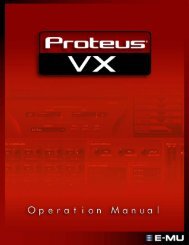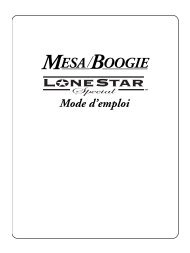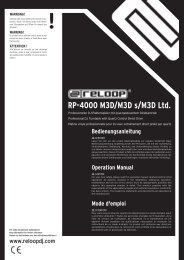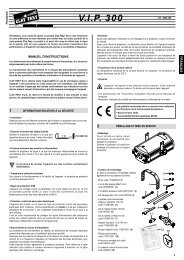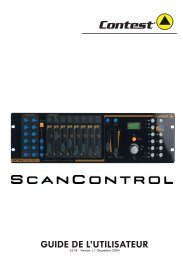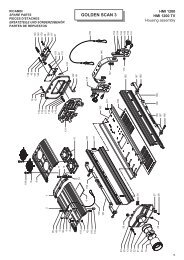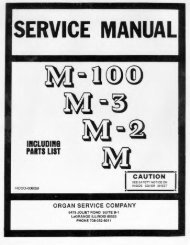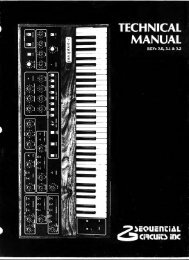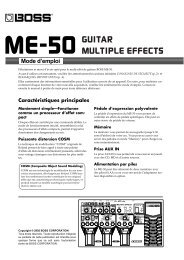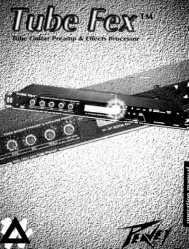You also want an ePaper? Increase the reach of your titles
YUMPU automatically turns print PDFs into web optimized ePapers that Google loves.
300 V 3.0 <strong>Owner's</strong> <strong>Manual</strong><strong>Lexicon</strong>Rich Plate Basic Sounds PageRTIM (Reverb Time)This control adjusts the reverberation time of the independent reverberator. Therange of action is limited. Be careful — both long and short reverb times maysound unnatural. If a much longer or shorter reverb time than the preset providesis desired, SIZE should be changed first.SIZESIZE allows you to vary the apparent size of the space over a wide range. SIZEis the most dramatic control, and must be selected to match the music or programmaterial. It should be the first control that you adjust to tailor the desired space.SIZE also affects the reverb time, in a similar way to the standard reverbprograms.ROLL (Hi Freq Rolloff)ROLL sets the frequency above which a 6 dB/octave low-pass filter attenuatesthe processed signal. It attenuates both pre-echoes and reverberant sound.High frequencies are often rolled off with this parameter, resulting in more naturalsounding reverberation.PDLY (Pre-Delay)PDLY adds an additional delay to the reflections and to the reverberation. Thiscontrol may be useful in a sound reinforcement situation, or for ambience effects.Both DDLY and PDLY have 4-sample (approximately 0.1msec) resolution.RLVL (Reverb Level)RLVL sets the amount of reverberation in the processed signal. It is normallyFULL, but may be reduced for effects where the pre-echoes should dominate.TDCY (Treble Decay)BASS (Bass Multiply)XOVR (Bass Crossover)TDCY sets the frequency above which sounds decay at a progressively fasterrate. It filters all the sound except the pre-echoes. When set relatively low, it givesa darker tone to the reverberation, simulating the effect of air absorption in a realhall. TDCY also helps keep the ambience generated by the program frommuddying the direct sound.BASS sets the reverb time for low-frequency signals, as a multiplier of the RTIMparameter. For example, if BASS is set to 2X, and RTIM is set to two seconds,the low frequency reverb time will be four seconds. For a natural-sounding hallambience, we recommend values of 1.5X or less.XOVR sets the frequency at which the transition from RTIM to BASS takes place.XOVR should be set at least two octaves higher than the low frequency you wantto boost. For example, to boost a signal at 100 Hz, set XOVR to 400 Hz (Thissetting works well for classical music). XOVR works best around 400 for boostinglow frequencies, and around 1.5 kHz for cutting low frequencies.4-12


